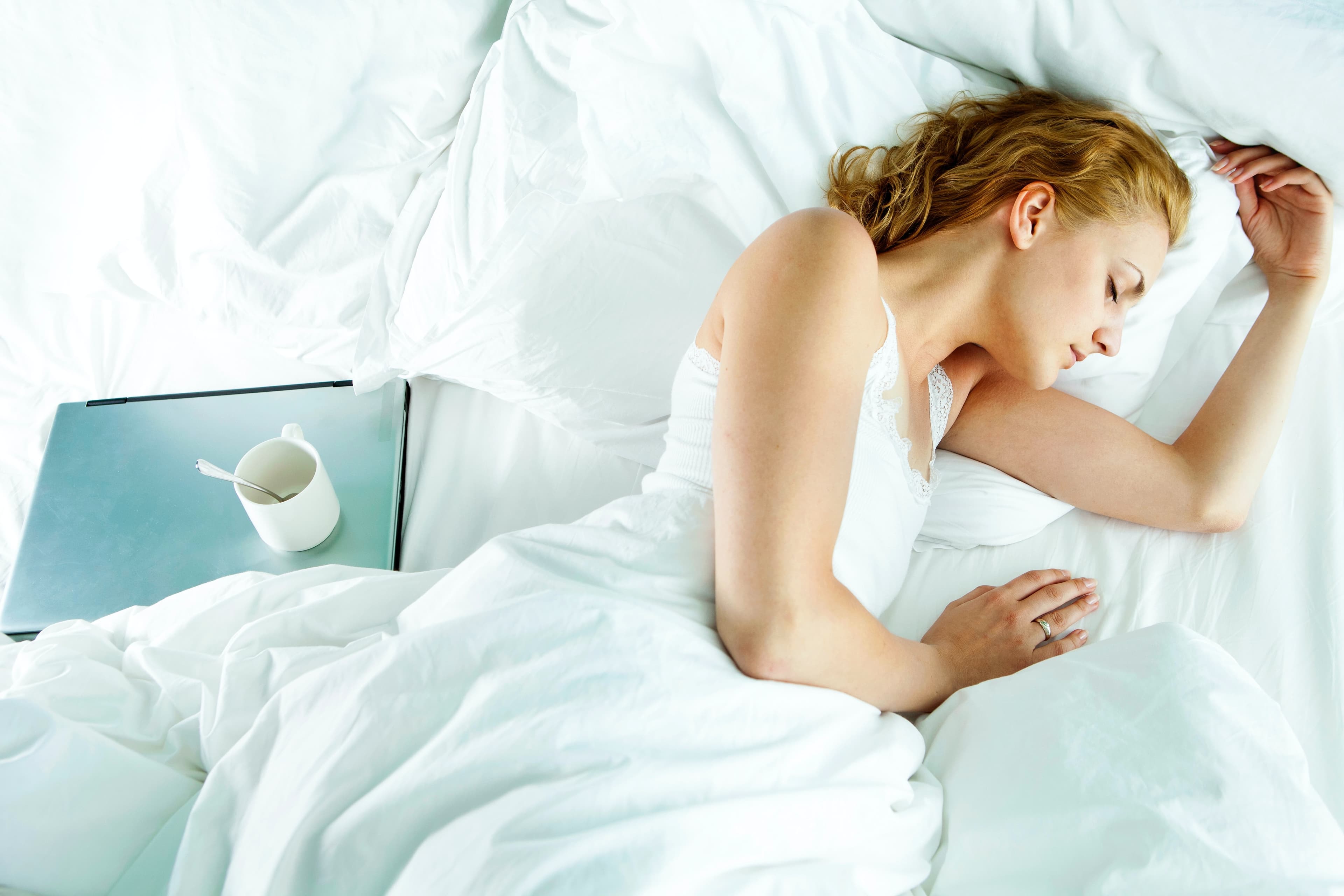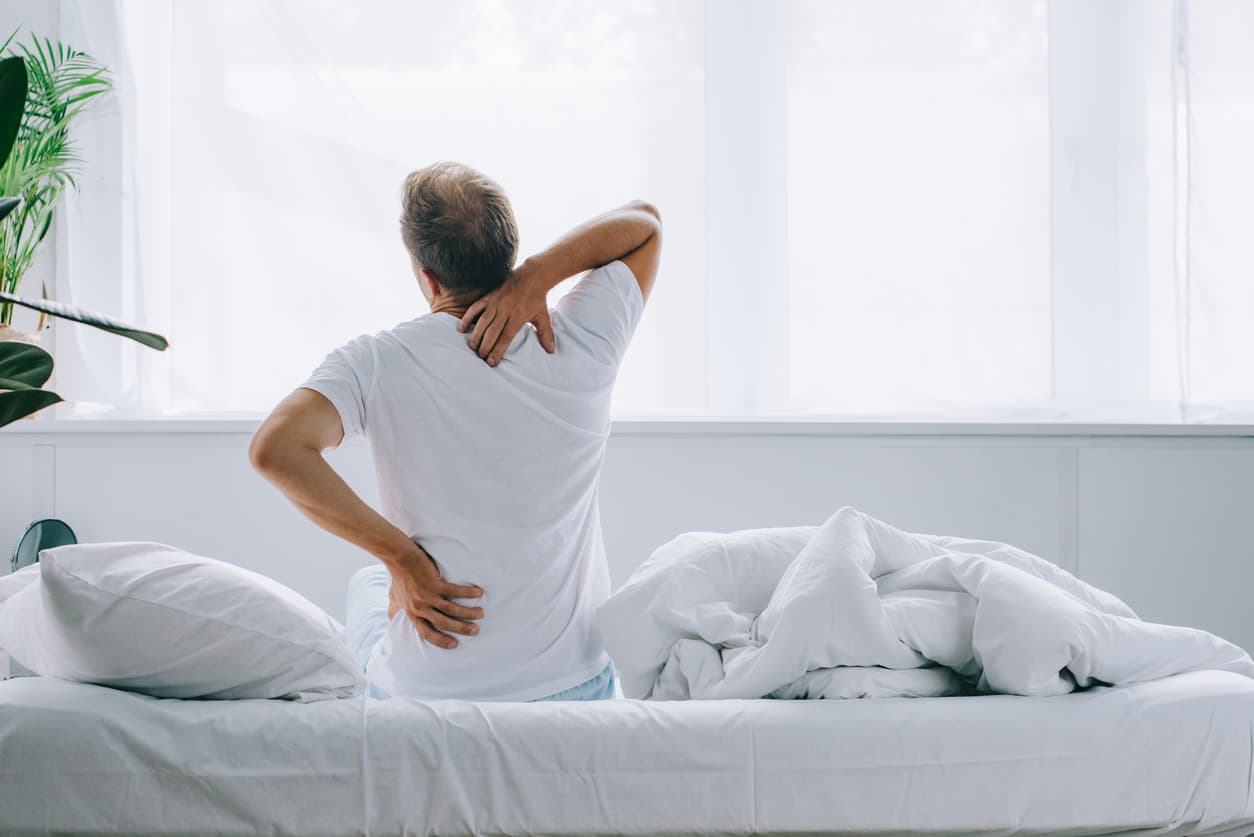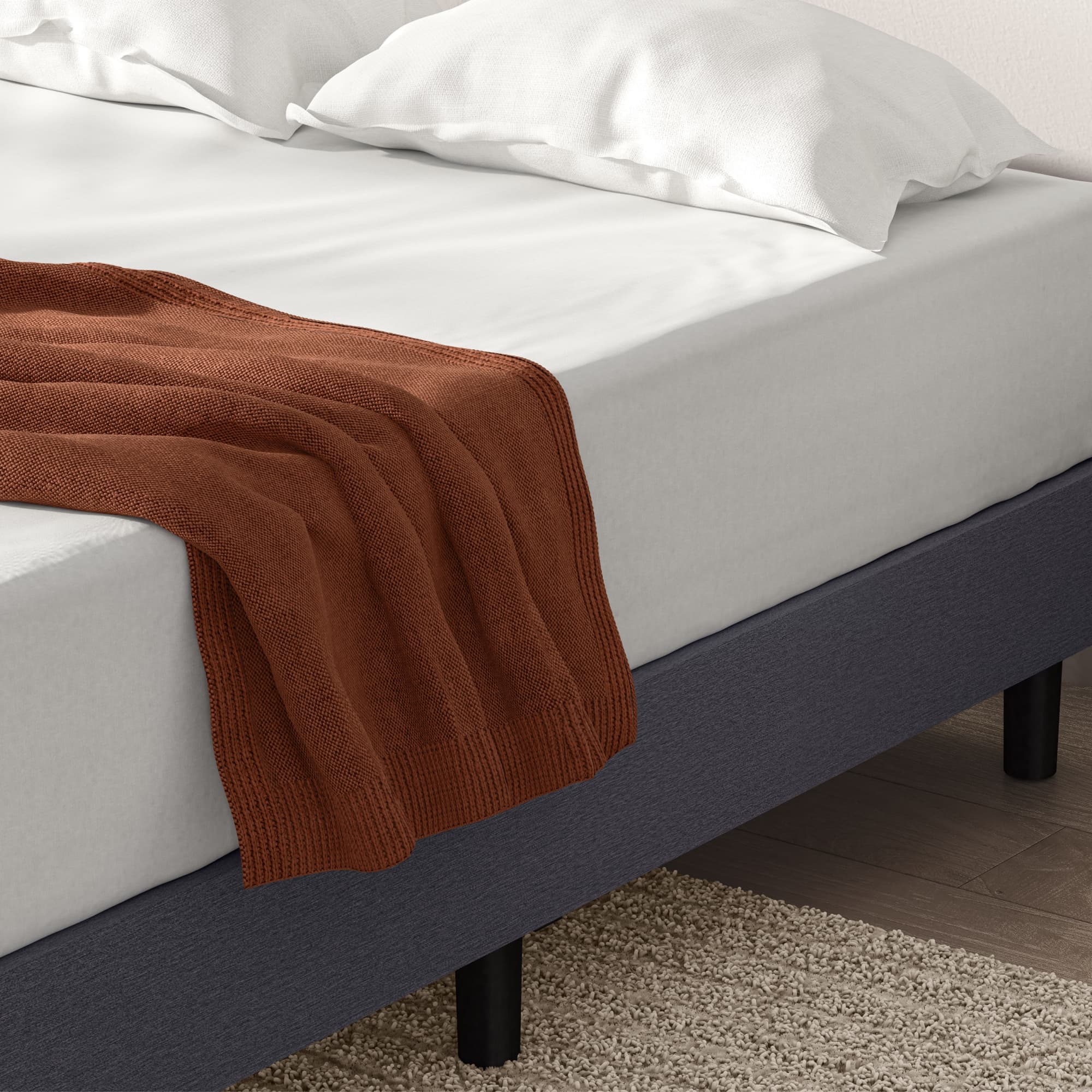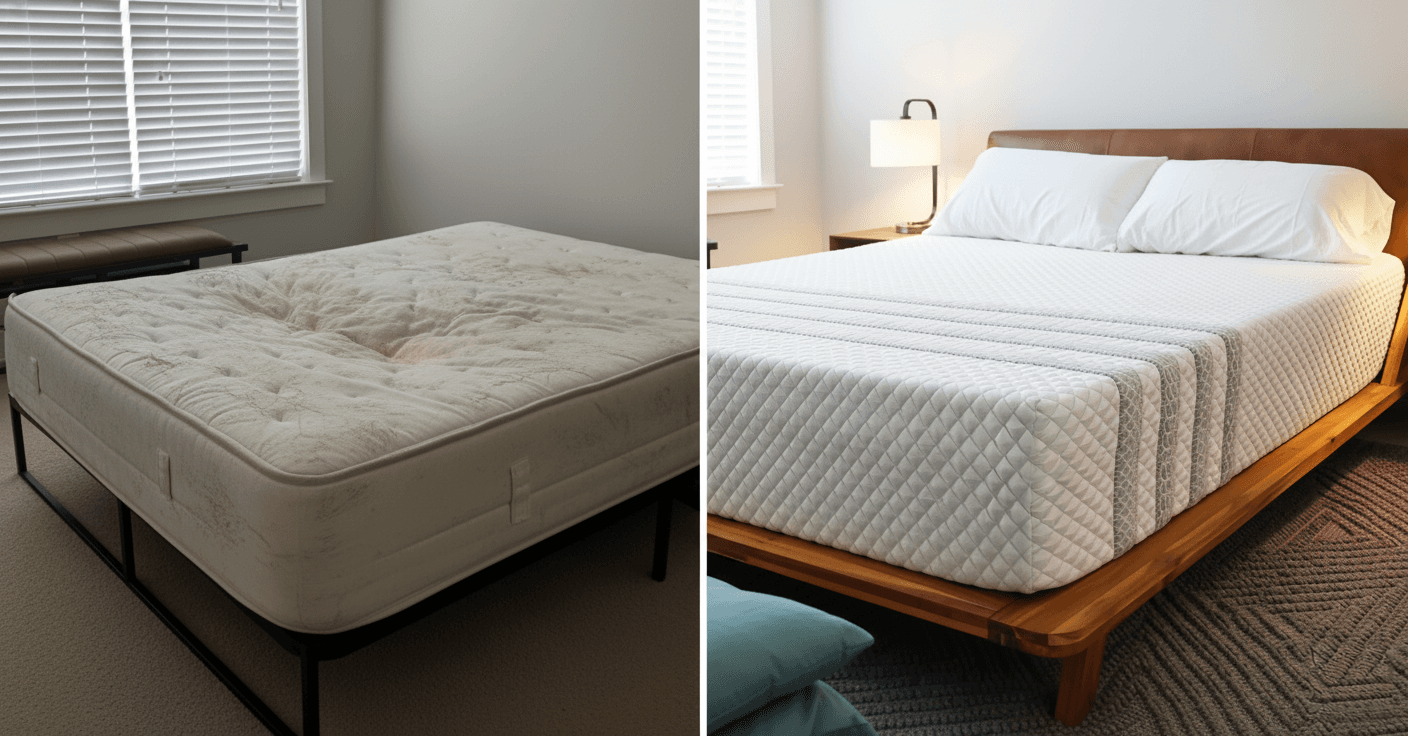You spend roughly 1/3 of your life sleeping, so how you sleep definitely matters. In fact, Sleep positions play a critical role in the quality of rest that you get at night and they can directly impact the severity of various medical conditions. It’s important to think about the way you sleep so that you can get the best night’s rest and wake up feeling healthy and refreshed.
Note: Since we will be talking about how sleep position can impact health conditions, we want to be clear we're not trying to provide medical advice here. You should speak with your healthcare provider if you have questions about preventing or managing a specific health problem.
With that out of the way, let's proceed!
Tips for Side Sleepers
A healthy sleeping position promotes spinal alignment from head to hips. But at the same time it takes a person's overall health needs and preferences into consideration. While people can learn to sleep in a different position, most have a usual way they prefer sleeping--side sleeping, sleeping on your back, or on your stomach. You developed this placement as a child, so it's hard to break, even if you realize it's causing problems.
Each sleep position has pros and cons for health, so carefully consider them. And know that sleeping position needs can change as you age.
Ultimately, if you do have a strong preference, there's probably a reason for it. It's comfortable for you. We won't tell you you have to give it up. But we will discuss how best practices for your sleeping style can support the benefits of that position while reducing the negatives.
Sleeping on Your Side
If you prefer the side sleep position, you're in good company. Around spend most of their nights on their side. Men are more likely to side sleep than women. Kids tend to sleep in all positions equally before choosing a preferred sleep style.
Side sleeping tends to be better for people:
- With acid reflux (gastroesophageal reflux disease)
- With obstructive sleep apnea or snoring
- With back pain
- Who are pregnant
- Who are older
Side sleeping does have some drawbacks, though:
- Can cause sleep wrinkles (a temporary face distortion)
- Increases the rate at which you
- Can increase shoulder pain, especially in those with arthritis
- Can misalign the spine if legs aren't kept aligned
- Can increase back pain if alignment is not maintained
- May experience pressure point on the hips
- May find you need to alternate sides more often to avoid pain
Left Side Sleeping Vs. Right Side
You may be wondering at this point: is one side better than the other? While side sleepers will likely need to switch sides because it relieves pressure, sleeping on the left side is considered healthier because it puts less strain on your liver, responsible for much of the body's detoxification. The left side also of acid reflux and GERD.
Best Sleeping Position for Pregnancy
The best position is on your side with the knees bent when pregnant. Most will recommend the left side for the reasons mentioned above. Plus, it increases blood flow to the baby and vital organs. It makes sure the belly is properly supported.
Sleeping Positions to Avoid During Pregnancy
Experts generally recommend that a pregnant woman not sleep on her back beyond the first trimester. In the second and third trimester, it puts the weight of the growing uterus on your organs and spine. This could lead to acid reflux, indigestion, poor circulation, and even a clot.
Best Sleeping Position for Back Pain
Side sleeping is considered one of the best sleep positions for back pain, as long as you follow good spinal alignment. Side sleeping can relieve low back pain.
For upper back and neck pain and prevention, choose a pillow that only lifts your head roughly the distance between your ear and outer shoulder. If your neck is at an angle up or down, you'll strain it.
Best Sleep Positions for Sleep Apnea
Side sleeping and stomach sleeping are generally best for people with sleep apnea or excessive snoring.
Side Sleepers Tips
While there are cons to this popular sleep position, many can be reduced or eliminated by choosing the right mattress. If you spend more time on your side, you're looking for a medium-firm mattress. It will offer you the spinal support you need while reducing pressure points, which may reduce the number of times you need to engage in spontaneous sleep positions to avoid pressure pain. The hand-crafted Leesa Sapira Hybrid is the perfect medium-firmness for side sleeping.
Consider testing a mattress before committing to it. You can, of course, go into a mattress store to do this. But that's a little awkward. When you choose a Leesa, you get a 100-day at-home mattress trial, and we even coordinate pickup if you’re not completely satisfied.
Choose a low, firm pillow to maintain good neck alignment. A soft pillow may seem like it would reduce wrinkles. But it can make them worse because your face sinks into it instead of sitting on top of it.
Keep your knees together and pull them up toward your chest into a fetal position, if you prefer. If your knees hurt or struggle to stay together, try putting a small, firm pillow between your knees.
Try to keep your face pointed forward rather than tucking your chin, which strains the neck.
Finally, try to keep your arms below your head, preferably at your sides. This may be hard for some people, but it is the best sleep position for side sleepers if you can achieve it.
Sleeping on Your Back
On your back offers the most health benefits unless you have one of the conditions above that makes back sleeping less than ideal. It's best for helping you maintain a.
Some of the pros of back sleeping include:
- Reducing heartburn and acid reflux (only if you keep your head elevated). Otherwise, it can have the opposite effect.
- Reduce neck pain
- Reduce lower back pain
- Prevent shoulder pain
- Prevent hip pain
- Can stay in the position longer because no pressure pain
- Can help those who have problems sleeping because of pain
Cons include:
- Back pain can get worse in some people. This usually happens because of pillow or mattress issues.
- Some people will toss and turn more if they're trying to force themselves to be back sleepers, although you can learn to be a back sleeper over several nights.
Best Sleeping Position for Neck Pain
Back sleeping is considered the best sleep position for neck pain. But your pillow mustn't be too high. In fact, many back sleepers don't sleep on a pillow or keep pillows to either side of their head.
Best Sleeping Position for Stuffy Nose
Back sleeping allows for effective drainage. Prop your upper back up on pillows to open your airways. However, a propped-up position can cause neck pain over time, so you should only use this position when you're stuffy or have heartburn.
Tips for Better Back Sleeping
Back sleeping is reasonably easy for back sleepers. One of the biggest issues people have with back sleeping is that they prefer side sleeping but need to back sleep to reduce pain and pressure.
To encourage back sleeping, try a combination of the following:
- Start on your back
- Put a pillow on either side of your torso. This reminds your sleeping brain not to turn you over without waking you up.
- Place a pillow under your knees.
- Place a pillow on either side of your head with no or a low pillow under your head
- Make sure your mattress isn't too firm, too soft, or caving in
- Use a rolled-up towel under your neck if you feel you need neck support
Your mattress type is critically important here as well. A mattress that's too firm with flatten your spine's natural curve rather than supporting it. A too soft mattress will cause your spine to sink into the bed unnaturally. You can achieve this with a hybrid mattress.
Sleeping on Your Stomach
When it comes to the best sleep positions, sleeping on your stomach is not at the top of our list. It has a lot of drawbacks. But it's very comfortable for some people. It's vital that if you are a stomach sleeper, you know how to do it in a way that causes the fewest issues.
First, what are the pros?
- Reduced snoring and sleep apnea
- Stress reduction. Sleeping on your stomach may provide you with comfort after a stressful day because it mimics giving someone a hug.
- Improved digestion
Yes, that's about it.
Cons include:
- Fastest face wrinkling
- Back and neck strain
- Shoulder pain
- Increased acid reflux
- Hard to maintain as you get older
- Not good for pregnancy unless you have a specialized pregnancy belly pillow
How to Sleep Better on Your Stomach
When sleeping on your stomach, use a thin pillow or no pillow under your head. Place a thin pillow under your pelvis or lower abdomen to elevate it slightly. This maintains a more natural spine curvature.
Additionally, start a morning slow stretch routine, including touching your toes to alleviate some of the issues caused by stomach sleeping.
If being a stomach sleeper is causing you problems, try side sleeping while hugging a large pillow. The pressure on your chest and abdomen feels like a hug and can mimic the sensation stomach sleepers prefer.
The National Sleep Foundation recommends medium-firm to firm mattresses for stomach sleeping. And which you choose is a matter of preference. For most people, a medium-firm is ideal. The provides the perfect hug and bounce for stomach sleepers.
The Best Sleep Position
All sleeping positions have their pros and cons. But they also clearly have benefits for a person who prefers that position. Choosing the right mattress and pillow for your sleep position is vital to getting the best night's sleep in any sleep position. Regardless of how you prefer to sleep, at Leesa
FAQs:
What do different sleeping positions mean?
Based upon sleeper surveys, certain personality types tend to prefer certain sleeping positions.
- Side sleepers who like the fetal position are often shy.
- A person who side sleeps in a more elongated position tends to be open but also suspicious of others' intentions.
- Side sleepers who sleep with their arms in front of them tend to be older and often open-minded but also cynical.
- Hands up stomach sleepers tend to be younger and are often social but withdraw when criticized.
- Back sleepers with hands at their sides tend to be reserved and analytical. This makes sense because most back sleepers are not naturally back sleepers. They chose to become back sleepers and trained themselves to do so because of the many benefits.
- Back sleepers with hands over their head are most often male. They tend to have high emotional intelligence. They're sometimes giving to their detriment, and they're good listeners.
What is the healthiest sleeping position?
The healthiest sleep position for most people will be back sleeping without a pillow. But if you have certain medical conditions like sleep apnea, snoring, or acid reflux left side sleeping is usually a better option.
What is the best way to sleep at night?
The best way to get a good night's sleep is first to choose a sleep position that's both comfortable and supportive of your health needs. And know that as we age, we often need to change our sleeping positions to reduce pressure. Choosing the right mattress and pillow for your sleeping position helps you get the most benefits with the fewest drawbacks from your position of choice. If you thought you'd have to give up your favorite sleep position because of back pain or pressure points, you may find a better mattress that lets you keep your sleeping habits.



